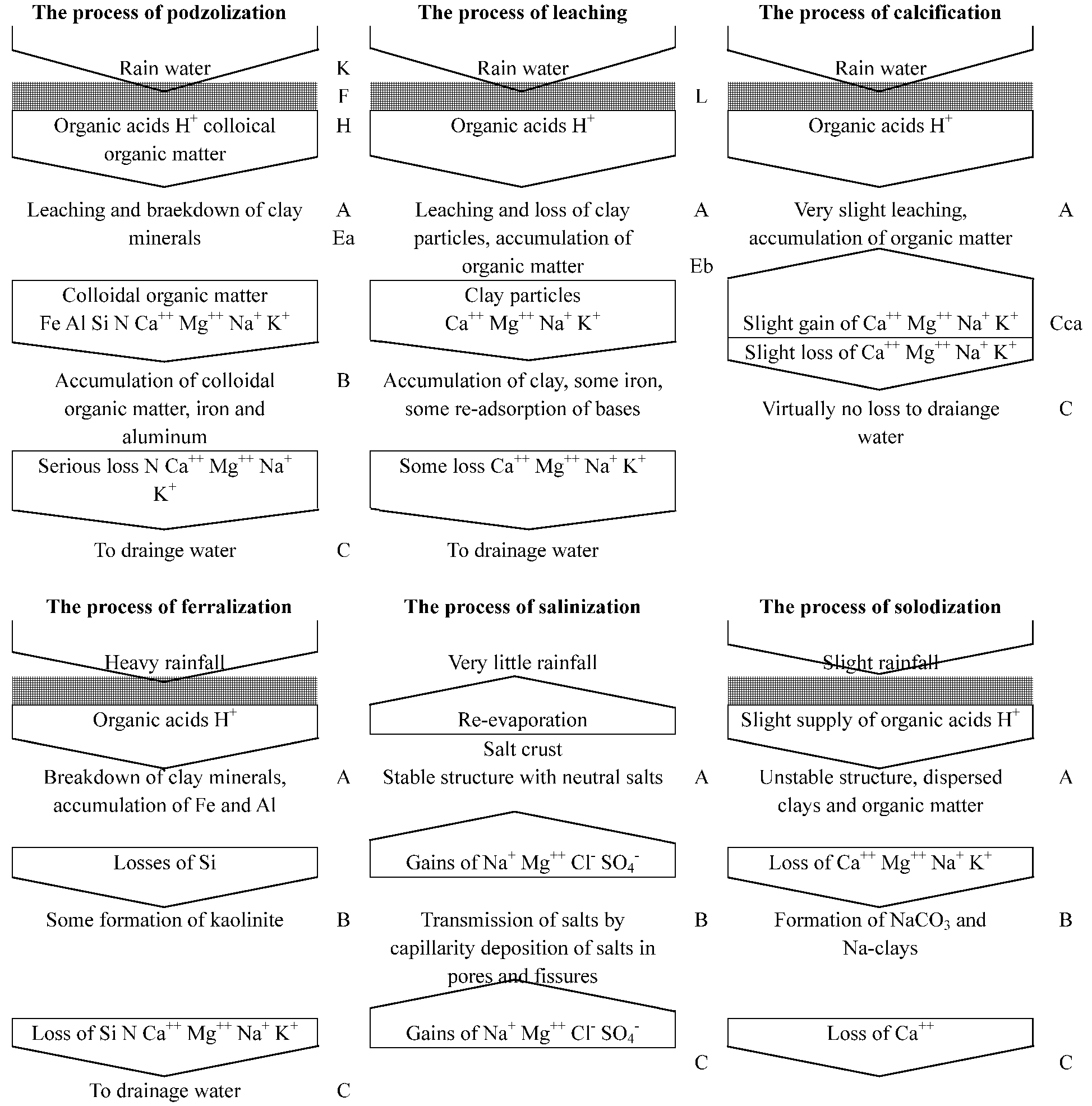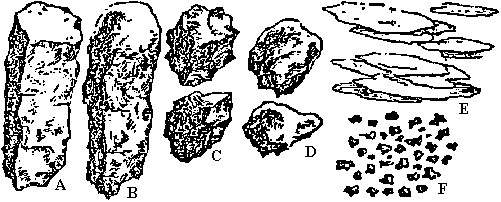(Upload on October 7 2025) [ 日本語 | English ]
Mount Usu / Sarobetsu post-mined peatland
From left: Crater basin in 1986 and 2006. Cottongrass / Daylily
HOME > Lecture catalog / Research summary > Glossary > Soil > Soil formation
soil formation = soil evolution
Weathering (風化)= rock weathering
Four processes of soil formationaddition (添加) of material to the developing soil profile from outside sources, such as organic matter from leaves, dust from the atmosphere, or soluble salts from groundwater loss (損失) of material from the soil profile by leaching to groundwater, erosion of surface material, or other forms of removal (often transformation and translocation result in the accumulation of material in a particular horizon) |
translocation (移動) or transportation of inorganic and organic materials from one horizon to another, either up or down (material is primarily moved by water but may also be moved by soil organisms) transformation (物質変化) of soil constituents from one form to another, such as through mineral weathering and organic matter breakdown |
|
(Jenny 1941) Soil, S = f(Cl, O, r, p, t, …)
Cl: climate = climosequence ≈ rhizosphere soil or rhizospheric soil (根圏土壌) Classification:
endorhizosphere (内根圏) mycorrhizosphere (菌根圏)a region around mycorrhizal fungi in which nutrients released from the fungi increase the microbial populations and their activities |
|
|
Podzolization (ポドゾル化) Leaching (洗脱) Calcification (石灰集積)
low precipitation under arid or semi-arid climate - Ca and Mg accumulate into soil Al↑, Fe↑ Ex. laterite Salinization (塩類集積)
NaCl, Na2SO4, Na2CO3, KNO3, etc.↑
drainage↑ → solonetz |
Solodization (アルカリ化) Rocky layer Humus (腐植)The fraction of soil organic matter that is amorphous and without the cellular structure of plants → rich in nutrients in general1982 established IHSS (International Humic Substances Society) Humic acid (腐植酸)dark colored, acidic, relatively high-molecular substances1919 Oden: used absorption spectrum of humic acids for the quantifiation 1930-40 Simon: separated into A type, B type and decayed substance Melanic index (メラニック指数), MI = K450/K520
(absorbance at 450 nm and 520 nm) |

Fig. Processes of soil formation (Buol 1973)
Measurement of humusSoil moisture = soil moisture probe |
|
(Soil Survey Staff 1951) Types of soil structure (土壌構造形状) |
☚ A: prismatic (角柱状), B: columnar (円柱状), C: angular blocky (塊状), D: subangular blocky (亜角塊状), E: platy (板状), F: granular (粒状). Scanning electron micrographs of kaolin clays. A. Coarse-fraction kaolin (MP clay). B, C. Medium size particle fraction taolin (English clay). Note ped fabric unit in (C) and marco pores. Pore characteristics between ped units are different from pore characteristics in ped unit itsself. D. Structure of a compound pedStructure of compound ped (粘土構造)Ped (ペド): aggregate of soil particles formed by pedogenic processes |
[water for plant use]
Groundwater, s.l. (地下水)water that exists beneath the earth surface, filling the pores and fractures in soil, sand, gravel and rock formationsDef. water level (水位): height of the water surface Ex. lake, river, groundwater Def. water table (地下水位/水位): upper boundary of the saturated zone underground, indicating groundwater surface Def. water depth (水深): vertical distance from the water surface to the bottom |
Soil water (土壌水)Def. the water held within the unsaturated zone of soil, above the water tableWetlandAerobic (好気性): having molecular oxygen (O2) presentAnaerobic (嫌気性): not having molecular oxygen (O2) present |
 Fig. Three-phase distribution |
Solid phase (固相)Liquid phase (液相)Infiltration (浸透, s.l.)Percolation (浸透, s.s.) Seepage (浸漏) = influent seepage + effluent seepage Air phase (気相) |